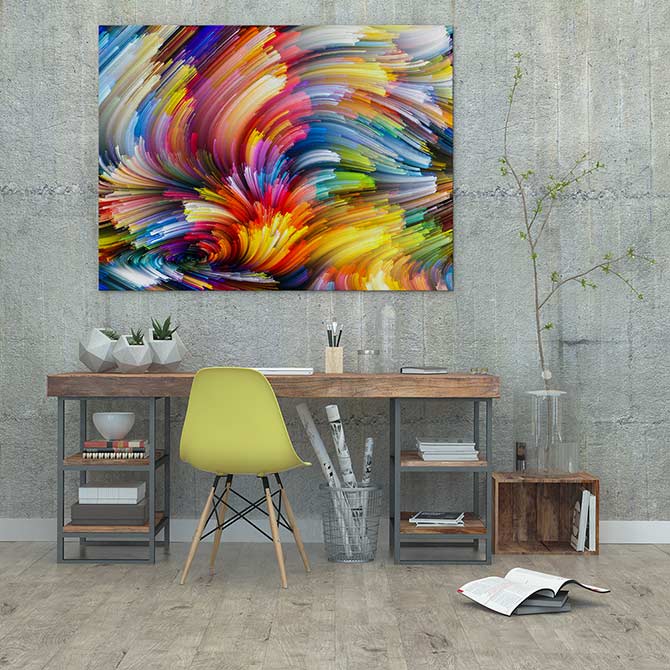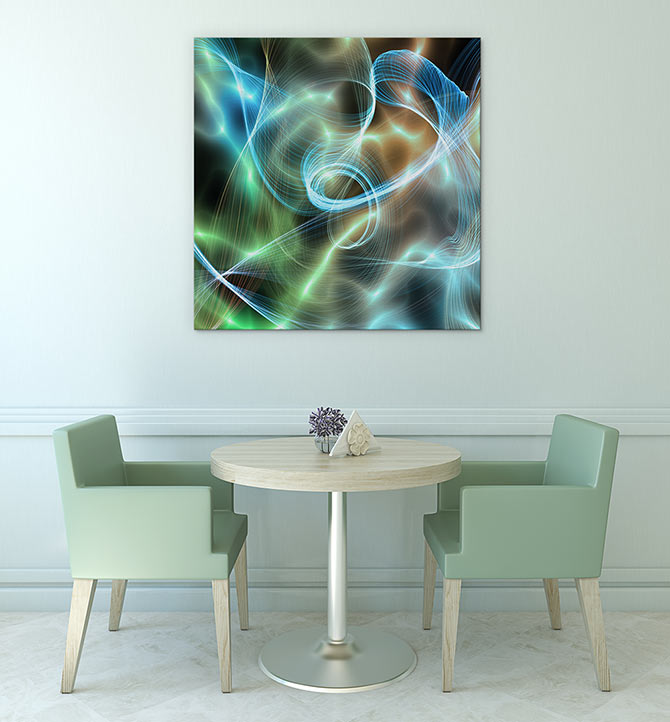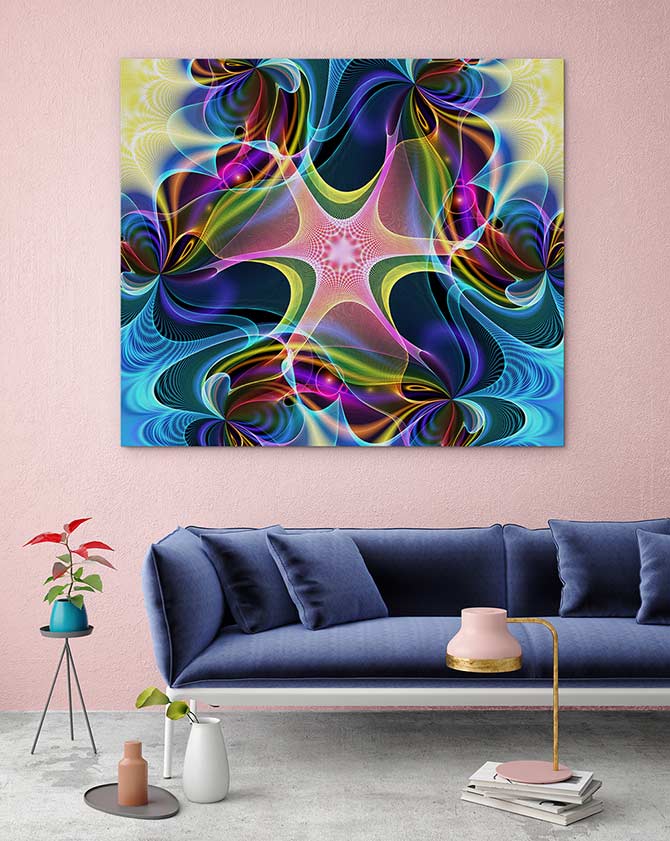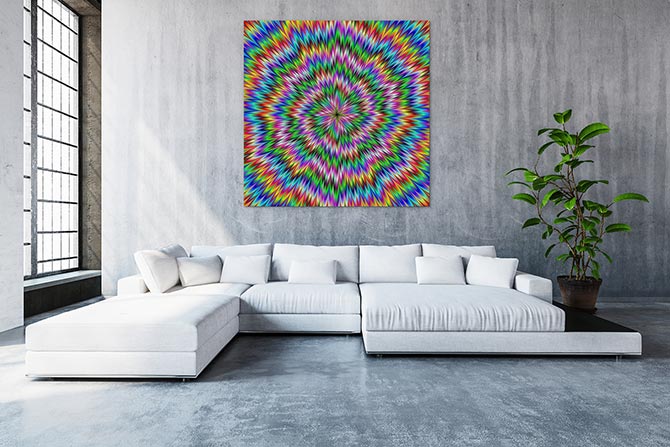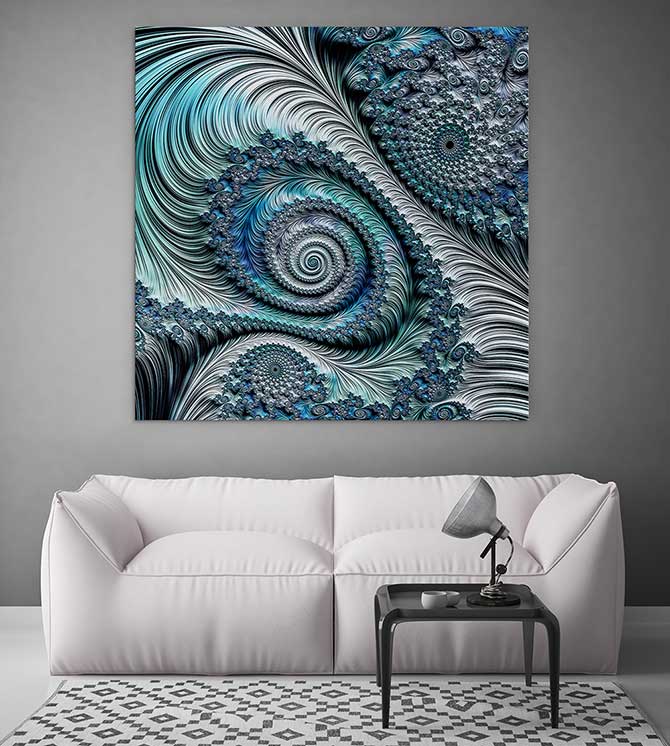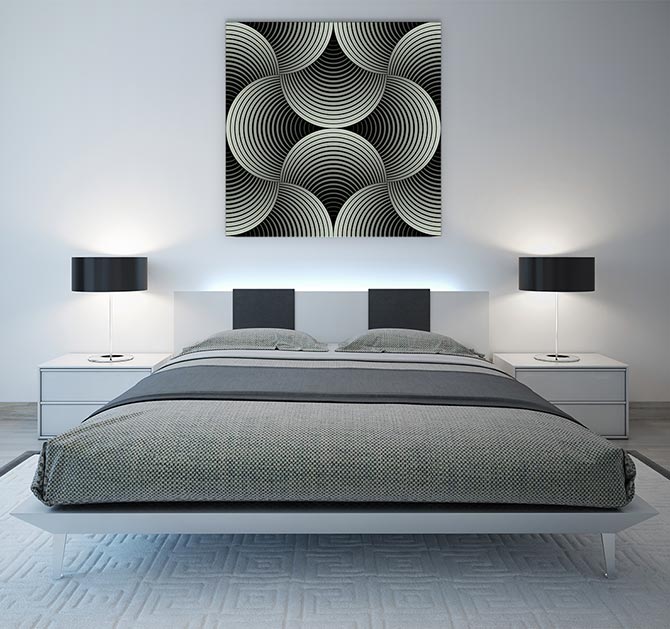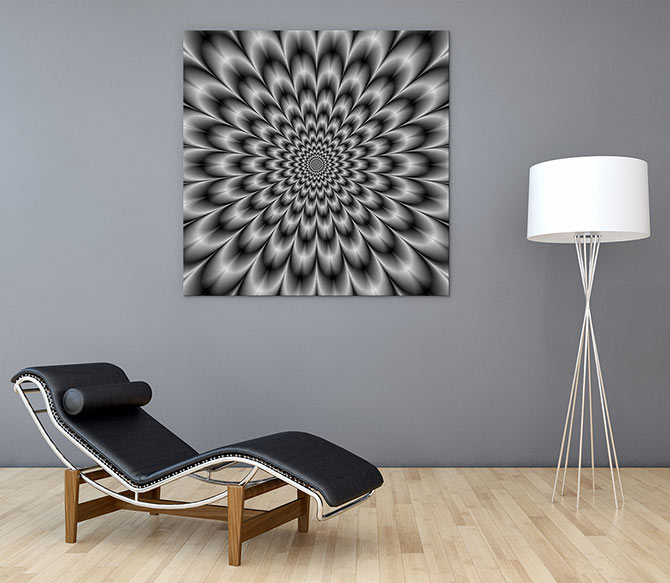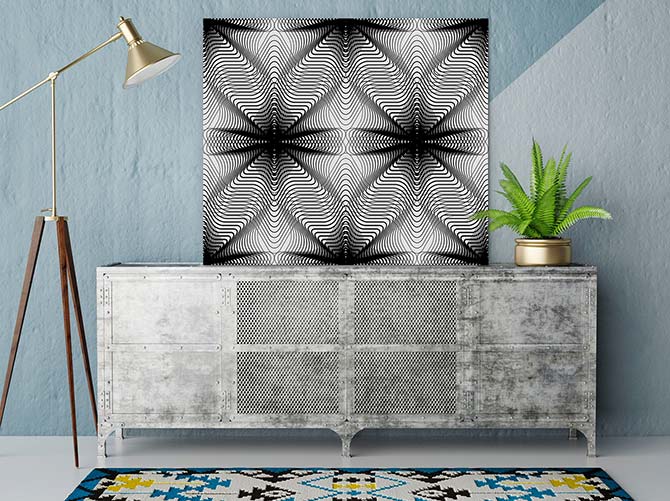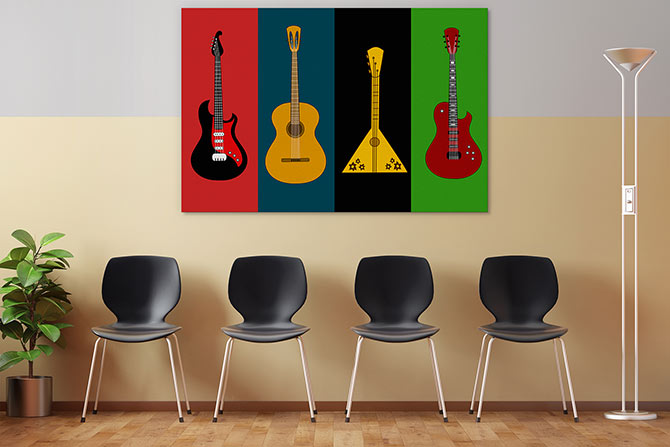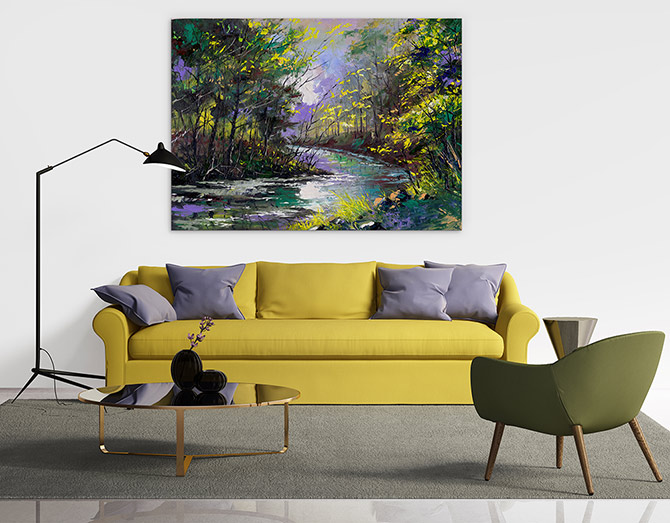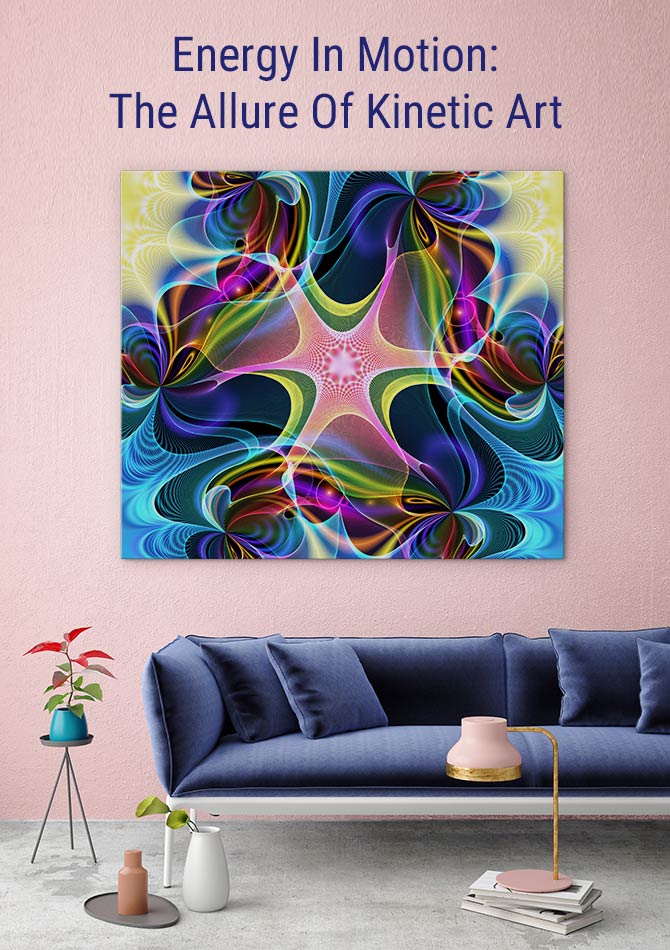
Kinetic art has come a long way since the movement enjoyed international acclaim between 1920 and 1970. The art form, also called kineticism, involves art that features both real and apparent motion.
This style of art includes sculpture as well works on canvas. According to The Art Story, kinetic art flourished as an avant-garde trend in 1955 with artists ‘fascinated by the possibilities of movement in art’.
Today, particularly with the widespread adoption of digital design, kinetic art has transformed into a colourful, contemporary style full of movement, illusion and fluidity.
Changing Directions
There’s something superbly anarchistic about this style of art. In particular, when colour is involved the unpredictable directional change takes the viewer on multiple different journeys.
That said, when looked on as a whole it seems to make complete sense. That’s the wonder of this fluid genre.
Kinetic art is more than just a rainbow palette of colour. A key theme in this art form is the use of light and shadow, to create almost ethereal works that infuse a space with energy.
Of course, for the ultimate statement piece, there’s no reason why you can’t combine light, shadow and a dazzling display of colour!
Imperfect Symmetry
While many art forms observe symmetry, kinetic art celebrates irregularity. Whether it’s achieved with a paintbrush or digital brush, the result is dizzyingly impressive.
Who knew a Mondrian style of art could boggle one’s mind so completely? Truly modern art with a twist!
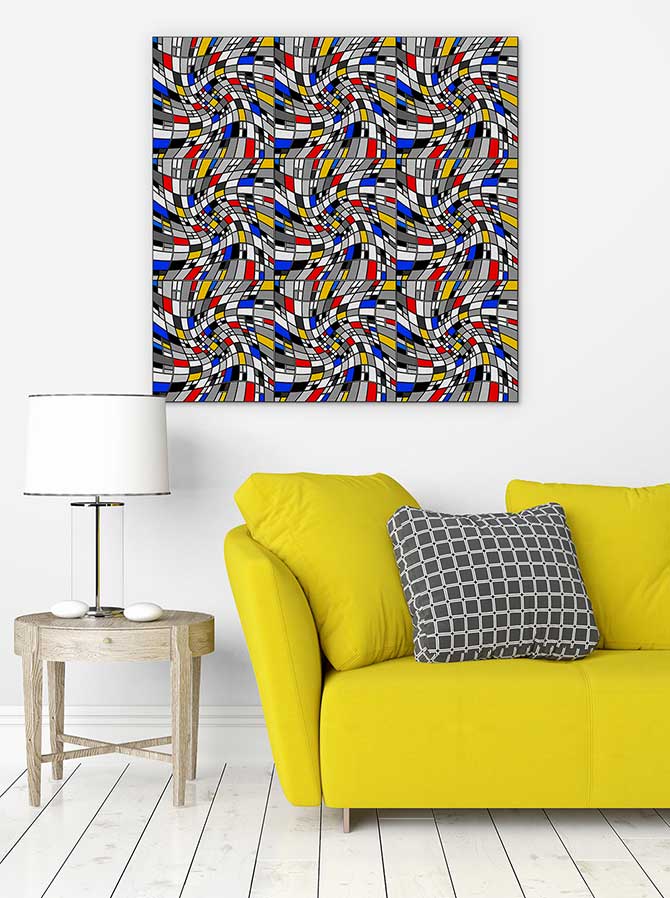
TWISTED: Have fun with a kinetic interpretation of classic Mondrian modern art
Aside from perfect asymmetry, kinetic art creates the illusion of movement by deceiving the brain in a sensory experience. For example, although logically we know the artwork below is static, it creates the perception of a living thing complete with pulsating heartbeat. Don’t see it? Look a little longer…
High Energy Blues
Often when we think of kinetics we think of water in its full fluid form. Kinetic artworks in blue evoke the energy and life force of water, one of the five great elements.
Associated with cleansing, healing, loving, intuition and imagination, the element of water is a wonderful way to bring life into a home.
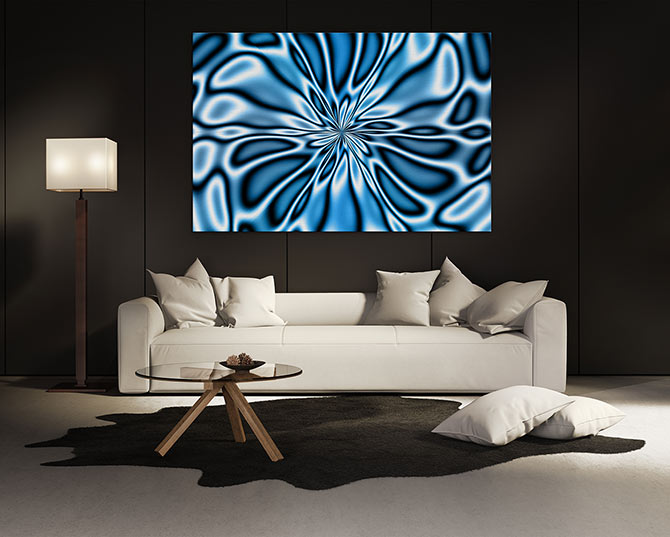
ELEMENTAL: Go with the flow by hanging art that captures the beauty of fluid forms
Another technique used to create a sense of movement is the use of fractals. A fractal is a never-ending pattern, generated by repeating a simple process over and over again, each time at a smaller scale.
In the scientific world, fractals represent partly random dynamic systems, for example crystal growth and galaxy formation. In the art world, fractals infuse a sense of movement by illustrating the infinite dynamics.
Black, White And Kinetic All Over
Closest to its most traditional form, black and white kinetic art combines abstraction and geometry to create big, bold statements.
These pieces combine art and technology by coalescing mechanical and natural motion – quite brilliant really.
Far from sensory deprivation, stripping out the colour can actually enhance the sense of motion and illusion that is intrinsic to kinetic art.
Black and white patterns can often be a great source of kinetic art, with naturally repeating elements that convey a sense of movement. Clever use of light and dark creates interesting pieces with timeless appeal.
Want to keep on moving? Energise your home and heart with more dynamic and exciting contemporary art ideas.

